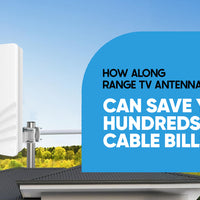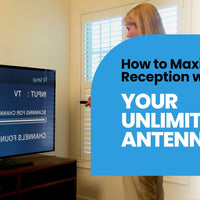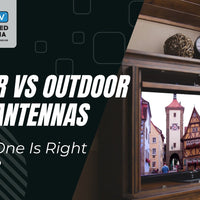Achieving optimal reception from an outdoor TV antenna is essential for enjoying clear, high-definition television without the interruptions caused by poor signal quality. As technology advances and broadcast standards improve, adjusting your outdoor TV antenna correctly becomes even more critical. This guide provides actionable steps to ensure the best possible reception in 2025.
1. Understanding Signal Sources
The first step to improving reception is identifying local broadcast towers. Tools like the Federal Communications Commission (FCC) DTV Reception Maps or other online platforms can pinpoint the nearest transmission towers, providing crucial information about their direction and distance from your location.
In 2023, over 90% of U.S. households had access to free over-the-air TV channels within a 50-mile radius, according to Nielsen reports. Properly aligning your outdoor TV antenna ensures you maximize this accessibility and receive the highest number of available channels.
2. Selecting the Appropriate Antenna
Choosing the right antenna for your location and needs can make a significant difference in reception quality. By understanding the types of antennas available, you can ensure better performance and more channels.
Antenna Types
Choosing the right antenna is vital. Directional antennas focus on specific towers, making them ideal for areas with distant or scattered signals. Conversely, omnidirectional antennas capture signals from multiple directions, suitable for urban areas with several nearby towers.
Modern antennas, like the Unlimited Antenna, offer cutting-edge features such as 4K resolution, 100-mile reception range, and built-in DVR capabilities. Such innovations make them ideal for households seeking both quality and convenience.
3. Optimal Antenna Placement
The placement of your antenna plays a crucial role in determining the quality of the signal you receive. Careful consideration of height and surrounding obstructions will enhance your viewing experience.
Elevation Matters
Putting the antenna as high as possible, like on a roof, pole, or other high structure, keeps things like buildings and trees from getting in the way. Signal strength significantly diminishes when there are physical barriers between the antenna and broadcast towers. According to Consumer Reports, raising the antenna by just 10 feet can improve signal quality by 15-20%.
Clear Line of Sight
Ensuring a clear line of sight to broadcast towers is crucial. Avoid installing the antenna near large metallic objects, thick walls, or dense foliage, which can cause interference. When positioning the antenna, use tools like a compass or smartphone apps to direct it precisely toward the broadcast towers.
4. Securing the Antenna
An outdoor antenna must be securely mounted to ensure durability and consistent performance. Proper installation will protect it from environmental factors and maintain signal quality.
Stable Mounting
Use durable mounting hardware to secure the antenna against wind, rain, and other environmental factors. Stability is crucial to maintaining consistent reception. Adjustable mounting brackets allow for easy repositioning without compromising the installation’s integrity.
Weatherproofing
Outdoor antennas should be weather-resistant to withstand harsh conditions. Look for models with UV coatings and corrosion-resistant materials. Regular inspections and maintenance are recommended to ensure long-term performance.
5. Regular Maintenance of Outdoor TV Antenna
To maintain excellent reception, periodic maintenance of your antenna and related components is essential. This ensures long-lasting performance and uninterrupted entertainment.
Periodic Inspections
Inspect the antenna and its components regularly for wear and tear. Check for loose cables, rusted brackets, or other signs of damage that may affect performance.
Software Updates
Ensure any connected devices, such as DVRs or smart TVs, are updated with the latest firmware to maintain compatibility with modern broadcasting standards. This step is especially important as ATSC 3.0, the next-generation broadcast standard, becomes more widespread.

Conclusion
Adjusting an outdoor TV antenna for the best reception in 2025 requires careful planning and execution. By understanding signal sources, selecting the right antenna, optimizing placement, and performing regular maintenance, viewers can enjoy uninterrupted high-definition broadcasts without relying on costly cable or streaming subscriptions. For those seeking a seamless experience, products like the Unlimited Antenna offer advanced features tailored to modern viewing needs, making it easier than ever to get a TV antenna with better reception.















